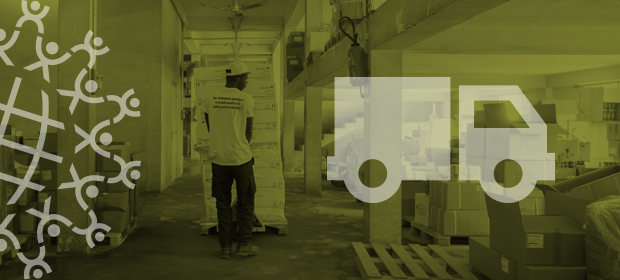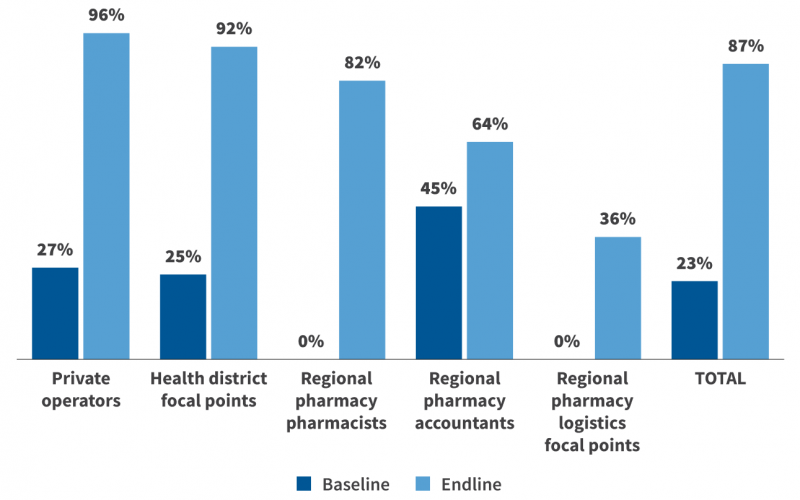Where We Work
See our interactive map


Intensive, tailored coaching created a more motivated workforce. Here’s how.
We sometimes say, “No product, no program,” within global health programs—because no health program can succeed if the medicines and health products people need aren’t available when and where they need them. It has become clearer than ever that without qualified, well-trained human resources to manage supply chains, health products do not reach the last mile.
For the past seven years, IntraHealth has been working with the Ministry of Health and Social Action and the National Supply Pharmacy in Senegal to make essential health products more widely available at health facilities.
Yeksi Naa (“I have arrived” in Wolof) is a distribution model that brings health products to the last mile. The model makes commodities more widely available at health facilities by combining two approaches: the National Supply Pharmacy’s Jegesi Naa Approach and the Informed Push Model. It contracts with private operators and uses electronic data collection to improve stock monitoring in real time.
Back in September 2018, few supply chain agents (only around 23%) knew about or were applying Yeksi Naa technical procedures. Our goal: to increase these scores to 75% in a year.
So we mentored supply chain workers, including on the Yeksi Naa technical procedures* and the accompanying electronic Logistics Information Management System (eLMIS). This led to better decision-making and increased data visibility. By July 2019, Yeksi Naa rates had increased.
Now, agents have an 87% overall performance score:

We needed to understand the barriers to optimal performance and find an effective method to assess and monitor their performance in the supply chain system. Six IntraHealth logisticians conducted an initial evaluation in July 2018 and classified the performance of each cadre using the Matri-Model and disaggregating by geography.
Our team developed targeted capacity-building plans based on assessment results and the support needs of each cadre, including how-to manuals and posters highlighting key components of Yeksi Naa and eLMIS. IntraHealth logisticians conducted supportive supervision such as in-person practical guidance to enhance their skills and application. Yeksi Naa project logisticians periodically assessed cadre knowledge levels of technical procedures and eLMIS using the Matri-Model tool.
We encountered several challenges along the way, including:
Addressing these difficulties ultimately led to a new assistant pharmacist position to support the logistician focal point. To sustain the achievements, the project director, Dr. Oumy Ndao, believes it’s critical to create a permanent position for logistician focal points at regional supply pharmacies to more effectively manage Yeksi Naa at the regional level.
Intensive, tailored capacity-building for supply chain workers created a more competent, motivated workforce. This allowed us to more effectively implement the Yeksi Naa model and improve supply chain performance, making more products accessible at the last mile in Senegal.
*Yeksi Naa technical procedures include guidance on: inventory management, distribution plans to service delivery points, using CommCare dashboard to monitor key logistics indicators, financial flow management and cost recovery, and managing expired products.
This project was funded jointly by the Bill and Melinda Gates Foundation and the Merck for Mothers Foundation. It was overseen by Babacar Gueye, IntraHealth's chief of party and country director in Senegal, and by Oumy Ndao, Yeksi Naa project director.
Get the latest updates from the blog and eNews




